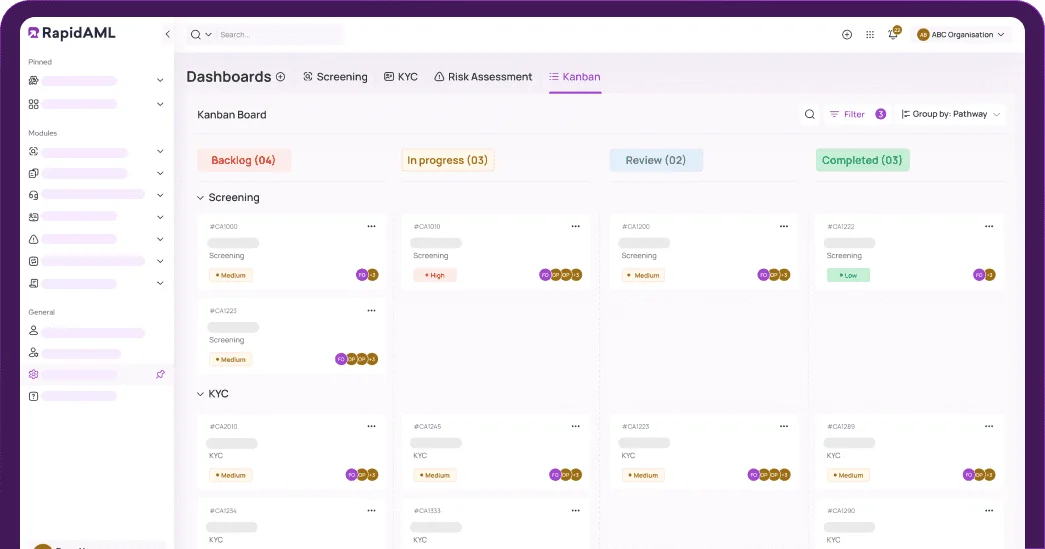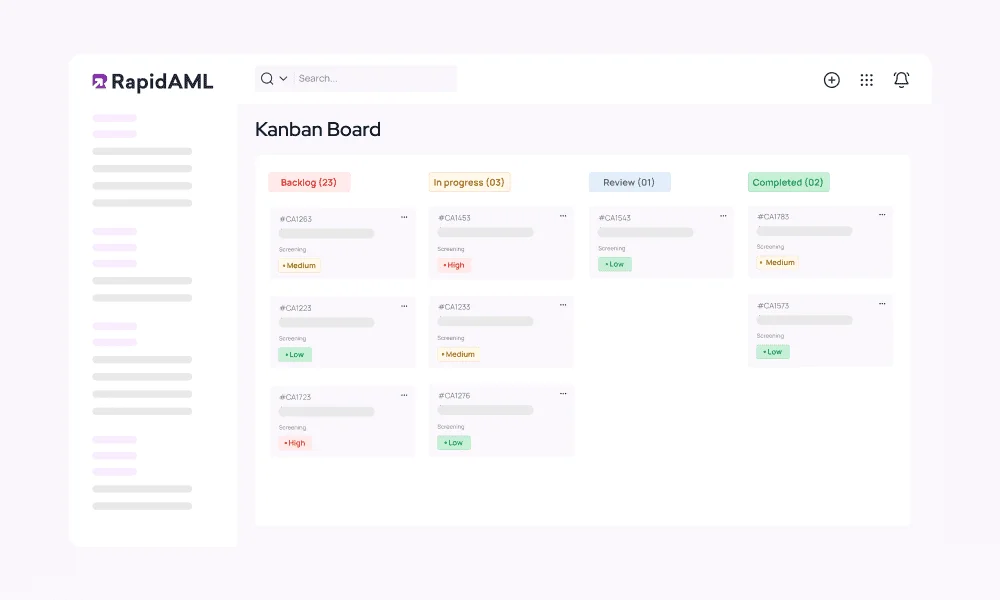Screening
Perform Sanctions, Adverse Media, and PEP Checks with Our Powerful, Next-Gen Screening
Knowledge is Power! So why not have it all?
Get access to 700+ global watchlists, sanctions screening, adverse media and PEP checks, all sharper than a lawyer in a courtroom showdown.
Here’s what we serve with our AML screening software: Segregated results, seamless case management and a treasure trove of premium features.
KYC
Experience KYC, The Easy-Peasy Way
With RapidAML, you get smooth KYC management, smoother than your morning coffee.
Secure uploads, easy verification, and storage so safe that even Fort Knox would be jealous.
Case Management
Case Management Workflows So Good, They Practically Run Themselves
Role-based workflows, intuitive consoles and effortless collaboration.
Customer Risk Assessment
Build Customer Risk Profiles Like Writing a Biography
Configurable risk parameters and automated risk scoring.
Regulatory Reporting
Elevate AML Regulatory Reporting with RapidAML for Unmatched Accuracy and Quality
Transaction Monitoring
Detect Suspicious Transactions in Real-Time with Our Transaction Monitoring



















